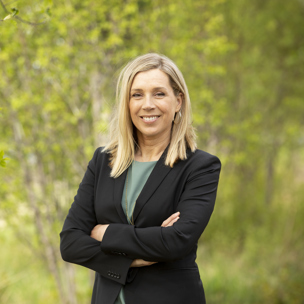Challenges of extracting rare earth elements
Just after New Year, LKAB announced that it has made the largest rare earth discovery in Europe to date. The elements are vital for building batteries, wind turbines and other technology that can enable a rapid transition to a fossil-free society. However, extracting the in-demand elements comes with some major challenges that need to be resolved, according to Jenny Greberg, Vice President Technology at LKAB and a Fellow of IVA.

“ There are indeed many challenges. First of all, we need to work intensively to find out even more about this deposit, exactly how large it is and what concentrations of the different elements it has. And once we know that, we need to find a way to extract it all in a way that has the least possible impact on the environment and the surrounding area,” says Jenny Greberg, who is also associate professor in Mining and Rock Engineering and the former programme director of the Swedish Mining Innovation programme.
LKAB’s prospecting so far has shown that the current deposit contains at least one million tonnes of rare earth elements that are embedded in a much larger deposit of iron ore.
“ This is basically an iron ore deposit. And what we know is that it has about 500 million tonnes of high iron content. This in turn contains phosphorus, and the rare earth elements are in the phosphorus.
Competition for critical resources
Many countries around the world consider access to rare earth elements to be critical for sustainable development, not least as key components in batteries, solar panels, wind turbines and other technologies that have been identified as crucial in achieving a rapid transition to a fossil-free society.

The pace of the green transition is, in principle, proportional to the availability of critical raw materials, and we predict a major shortage of rare earth elements in the future.
The deposit in Kiruna is of huge interest, as Sweden and the rest of Europe have so far been completely dependent on other countries for their supply of the much-sought-after elements, which are currently largely imported from China. Rare earth elements are found in many parts of the bedrock, not least in Sweden. But it is unusual to find them in concentrations that are technically and economically viable for mining, confirms Greberg.
“ What’s so special about this deposit is that the concentrations of both phosphorus and rare earth elements are much higher than usual. In fact, the levels are around seven times higher than in the ore we are currently mining in Kiruna.”
Tough requirements and conflicting interests
Although LKAB’s estimates indicate an abundance of rare earth elements in the rock outside Kiruna, several major challenges remain to be resolved in order to start extracting the resources – not least because the new deposit is located in an area where it risks affecting other key national interests, such as reindeer husbandry and unique natural assets. There is a long list of requirements that must be met in order to obtain a permit to start mining the rare earth elements in the rock outside Kiruna. And that is how it should be, says Jenny Greberg, who stresses that she sees no reason to ease the requirements:
“ It’s important to fully respect the challenges we face in terms of both the environment and land use, and we are very humble about this. Before we submit an environmental assessment application, we need to feel that we have good solutions in place.”
Need for technical development and green energy
Meeting the strict requirements will require new technology to be developed.
“ The technology is out there, but it has to be adapted to the specific conditions of our site. And we have a lot of development work ahead of us to find the best way to mine and process the material. Then there are the external factors to do with the impact on the environment and the surrounding area, which are well-regulated and we have to take into account. So the next technical challenge is to make sure that we do this with the least possible impact,” says Jenny Greberg.
Once the ore containing the rare earth elements has been mined from the rock, new technology is also needed to be able to extract the rare elements and then further refine them – processes that require access to green energy.
“ These are energy-intensive processes, especially when it comes to refinement. And doing everything that needs to be done up here in northern Sweden, using green energy, is a challenge. But we believe in this, and we believe we can do it. We know that the way ahead won’t be straightforward, and there are factors that we depend on as a company but don’t have control over, such as access to energy.”
Considerable expertise required
Another important factor that needs to be managed is access to the right skills. To extract a completely new kind of metals in Sweden, we need expert knowledge that in many cases we don’t have right now, says Greberg:
“ We don’t have any experience in Sweden in extracting rare earth elements. So we need to build up our expertise in this field. We’ll need to work on experimental operations and then upscale it all.”
And although this work has already begun, it will take much greater efforts to build the strong clusters of expertise that will be needed in Sweden. This includes educational initiatives at universities and institutes, which Jenny Greberg thinks should have been started a long time ago:
“ There are pockets of this expertise, but overall we’re a little late to the party. We should really have an entire army of skilled engineers and geologists to draw on, who are prepared to help us with this, but we don’t. As things stand today, we’ll be reliant on importing knowledge and then trying to adapt it to our conditions.”
Long permit process
Making the decision to establish a new mine is a long process that requires difficult trade-offs between the various values and interests that have to be weighed against each other. While Jenny Greberg again stresses that LKAB has no desire to see the permit threshold lowered, she does think the process needs to be made more efficient. She also considers it important to explain all the positives that extracting the rare earth elements found by LKAB would bring for Sweden.
“ This is about us being able to help reduce Sweden and Europe’s dependence on imports. We all know that the geopolitical situation has changed drastically in the last year, and we all understand more about what this means from a geopolitical perspective, but also from a sustainability perspective. And this project can help us achieve our climate goals – in Sweden and beyond. Because we want to extract these elements in a sustainable way, and we can do things differently in Sweden compared with many other countries.”
Jenny Greberg also thinks it is worth bearing in mind how many jobs a new mining operation would create for the region – not just in the core operation itself, but also in so many local businesses, as more workers move in, requiring new housing and expanded community services.
“ So there are many challenges to overcome, but I feel positive. As a company, LKAB has a long history of co-existing with tourism, reindeer husbandry and so on, along with extensive experience in running environmentally safe operations. I’m more concerned about the timeframe. These processes are protracted and long-winded, so I think we’ll be able to do it, but it will take a long time.”
Facts
What are rare earth elements?
Rare earth elements (REE) are a group of metals that are on the EU’s list of critical raw materials, and whose applications include the manufacture of batteries, the strong magnets found in electric motors, and the generators needed to produce electricity at various types of power plant.
The 17 rare earth elements are: lanthanum (La), cerium (Ce), praseodymium (Pr), neodymium (Nd), promethium (Pm), samarium (Sm), europium (Eu), gadolinium (Gd), terbium (Tb), dysprosium (Dy), holmium (Ho), erbium (Er), tulium (Tm), ytterbium (Yb), lutetium (Lm), scandium (Sc) and yttrium (Y). (Source: SGU)
How large are the deposits of rare earth elements in Kiruna?
The new Per Geijer deposit is located about one kilometre north of Kiruna and according to LKAB’s prospecting, it holds at least one million tonnes of rare earth elements. This is almost four times more than the amount mined globally in 2021 (Source: LKAB & Statista)
Where in the world are rare earth elements mined?
China is by far the largest producer of rare earth elements with 86 percent of global production, followed by Australia (6 percent) and the USA (2 percent). 90 percent of demand for rare earth elements within the EU is met through imports from China. Only a small proportion (3–8 percent) is sourced from recycling activities. Sweden currently has no mining or production of rare earth elements, but mining has previously taken place in the Bastnäs ore field in Västmanland County. (Source: SGU)
What is a site of national interest?
A site of national interest is a geographical area or place that must be protected by law because it contains qualities and assets that are of vital interest to the nation. This may be anything from preserving environments that are important for outdoor pursuits or Swedish reindeer husbandry to protecting places with opportunities to exploit natural resources that are of great value to Sweden. Once something is classified as a national interest, the state can intervene if a municipality does not take this into account and weigh it against other national interests in its comprehensive planning. (Source: Swedish Environmental Protection Agency & Boverket)
About Jenny Greberg
Jenny Greberg has held the position of Vice President Technology at LKAB since November 2022. She is an associate professor in Mining and Rock Engineering and has previously worked as programme director for Swedish Mining Innovation, a programme that forms part of Vinnova, the Swedish Energy Agency and Forma’s investment in strategic innovation areas.
She has been a Fellow of the Royal Swedish Academy of Engineering Sciences (IVA) since 2021.


